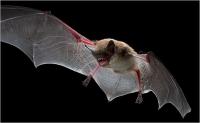Introduction
Background
Bats provide many important ecosystem services due to their different feeding specializations. Pollination, seed dispersal, fertilizers (guano) and biological control are some of the major services they provide for us (Kunz & Parsons 2009; Kunz et al. 2011). In Sweden monitoring of bat fauna is important since this mammalian group is a significant part of the biodiversity in the landscape that requires ongoing consideration and precautions (Ahlén 2012), and also rich species occurrence of bats usually is an indication of environments with great biodiversity (Claesson et al 2004). In Sweden it has just reacently been publiched a tutorial compendium in monitoring bat fauna (Ahlén 2012) and it is still uncertin when during the night it is most effectiv to monitor bats. A lot of different recomentations has been proposed all from "start at sunset" (de Jong & Nord 2005) to "one hour after sunset" (Gerell & Gerell Lundberg 2003). Another recomendation is that one should not monitor bats after midnight (00:00 - 01:00) since activity decrease at that time (Eriksson 2010; Ignell 2012; Ahlén 2012). Knowing when and for how long to perform fieldwork during the night is crucial for effective choices in how to perform surveillance.
Aim
The purpose of this project is to streamline bat monitoring efforts. I will try to clear out uncertainties by asking: When should one survey during the night? And: Is there a decrease in activity at midnight?
Furthermore, with better knowledge of how different weather affect the bat activity one can determine the effort that is needed on a local of interest. Therefore will I also try to determine if there are some local weather parameters that affect the bats more than others.
References
Kunz T H, Parsons S (2009) Ecological and Behavioral Methods for the Study of Bats. THE JOHNS HOPKINS UNIVERSITY PRESS: Baltimore.
Kunz T H, Braun de Torrez E, Bauer D, Lobova T, Fleming T. H (2011) Ecosystem services provided by bats. Annals of the New York Academy of Science 1223: 1-38.
Ahlén I. (2012) Artkartering av fladdermöss. NATURVÅRDSVERKET: Stockholm. (Swedish)
Claesson K, Askling J, Ignell H (2004) Fladdermöss i Östergötland Resultat från inventeringar utförda 1978 - 2004. LÄNSSTYRELSEN ÖSTERGÖTLAND Miljövårdsenheten. (Swedish)
de Jong J, Nord M (2005) Aktivitetsmönster hos fladdermöss. Unpublished manuscript to the Environmental Protection Agency of Sweden. (Swedish)
Gerell R, Gerell Lundberg K (2003) Övervakning av fladdermöss i Skåne.Environmental Protection Agency of Scania: Malmö. (Swedish)
Responsible for this page:
Director of undergraduate studies Biology
Last updated:
05/16/13

